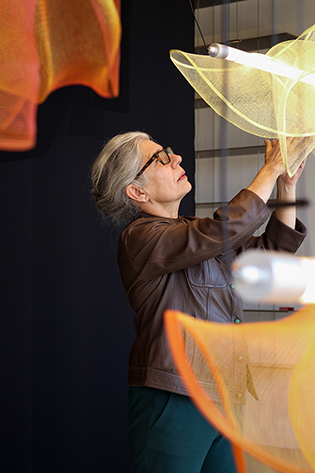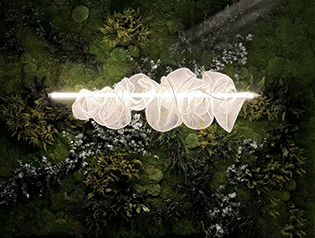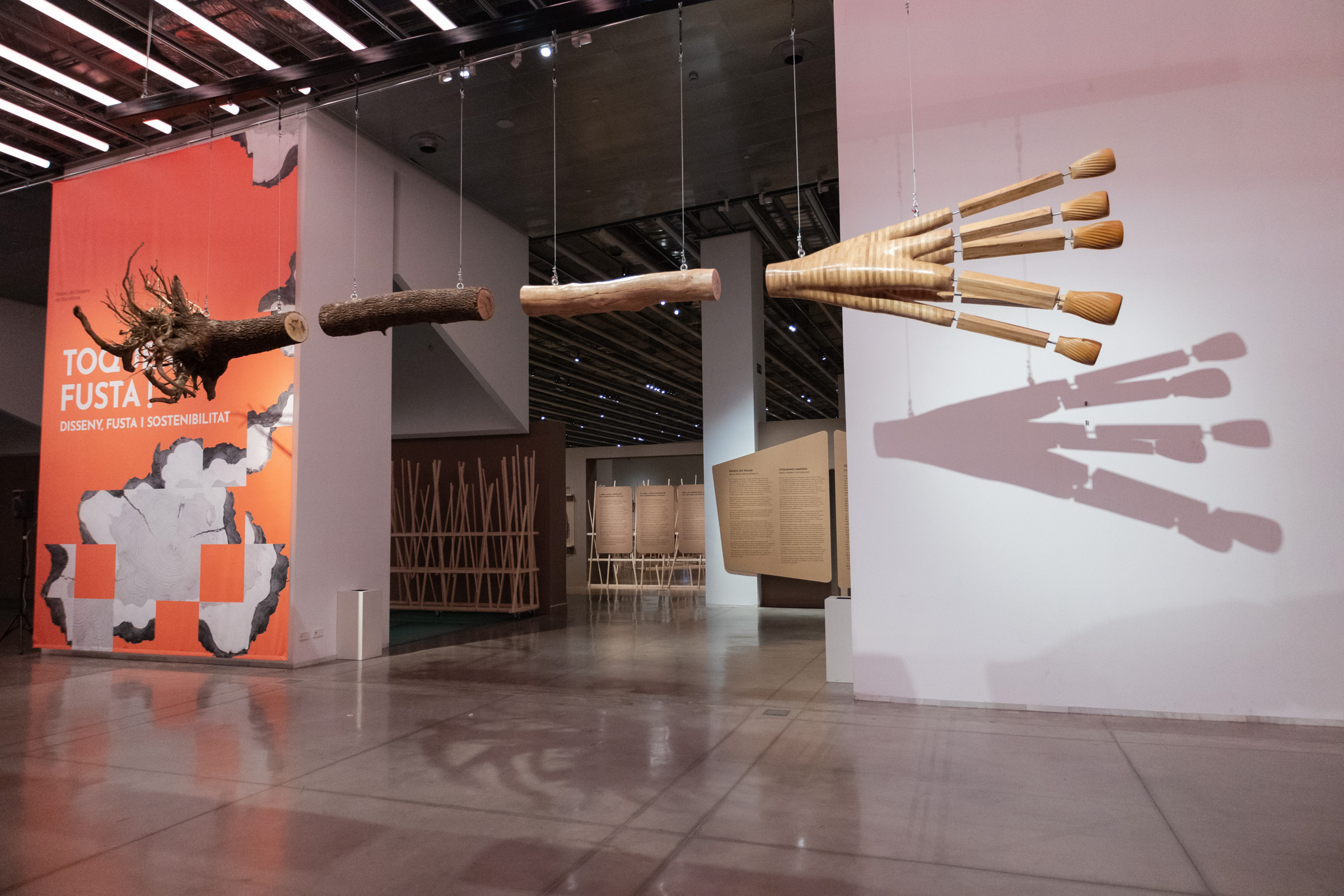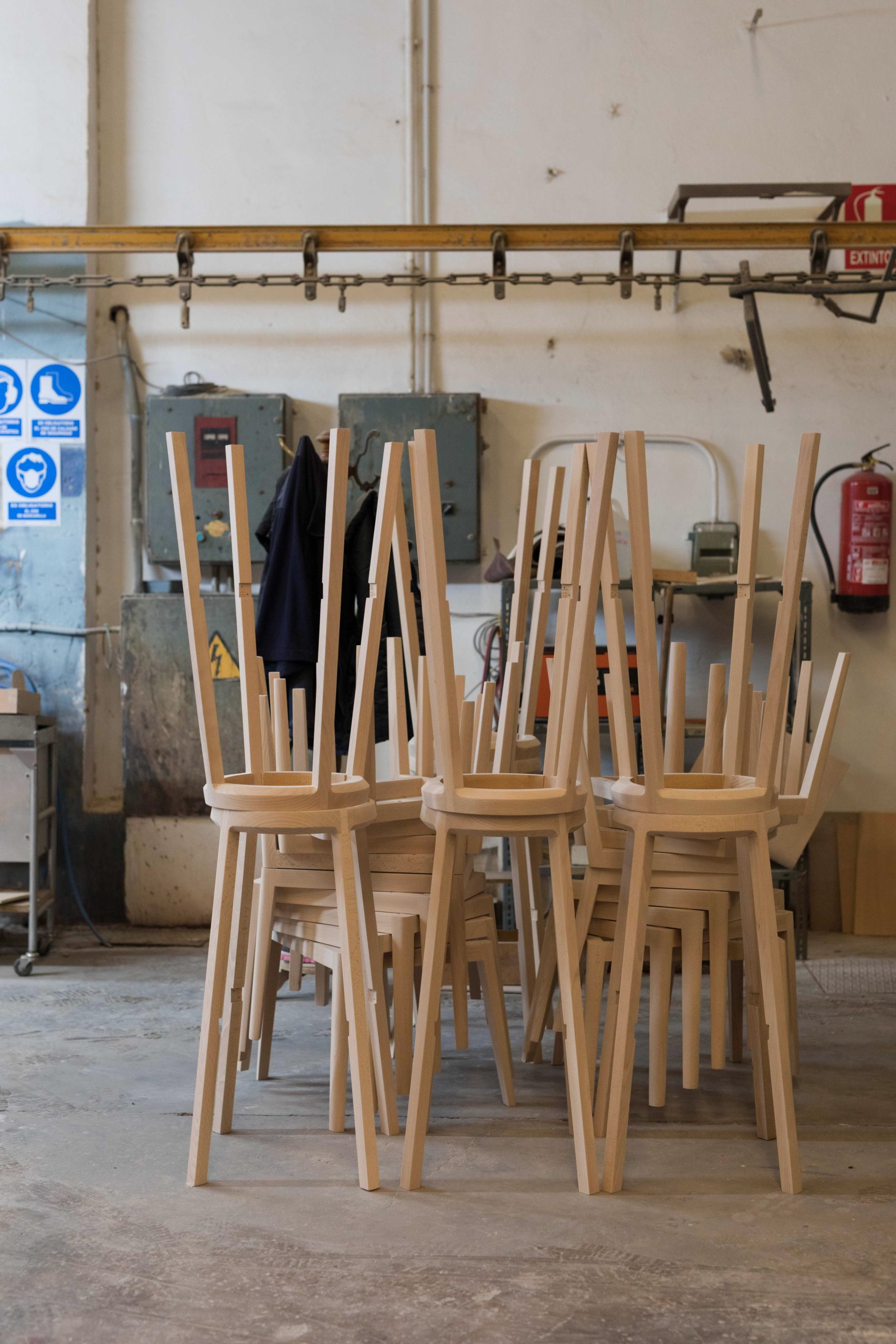In October 2021, Expormim was awarded the Premio Nacional de Diseño, the highest acknowledgement in the field of design in Spain. The Valencia-based company received the prestigious accolade in recognition of its outstanding design ethos, craft heritage, and commitment to sustainability, legacy, and people. It’s a long way from Expormim’s roots as a maker and exporter of wicker products, when it once crafted baskets, cradles, folding screens, and trays.
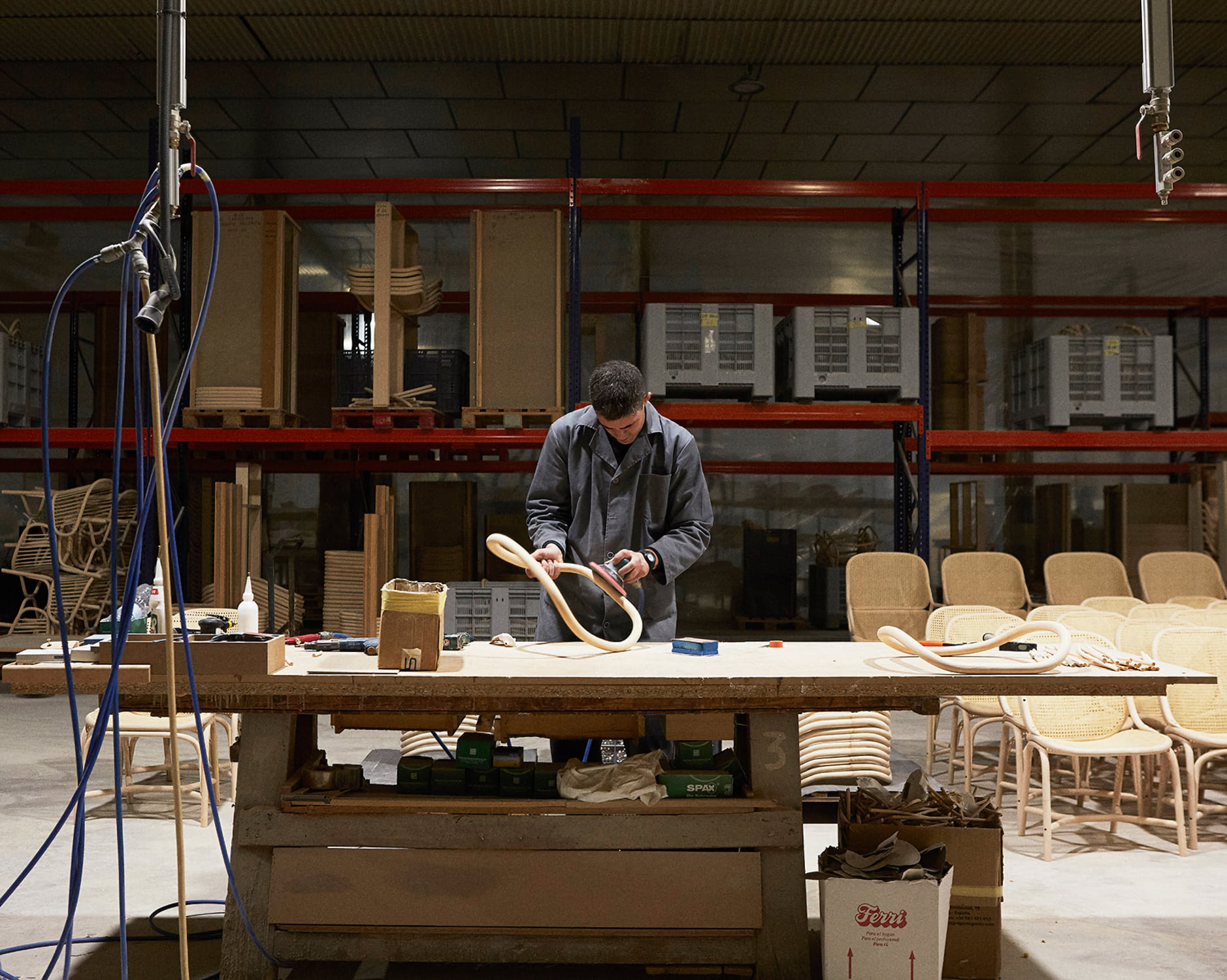
‘Expormim 60 years: A Tribute to Craftsmen.’ Photo © Mariluz Vidal.
Originally founded in 1960 by the creative and enterprising Miguel Laso Tortosa as La Exportadora del Mimbre (meaning ‘the wicker exporter’), Expormim has grown exponentially in terms of its stature and design. Tortosa’s son, Miguel Laso LLopis, joined the business in 1964. With his head for research and innovative enthusiasm, the company’s wicker product range expanded to include furniture. In the years that followed, an increasing demand for furniture (for second homes) meant further growth. In 1980, La Exportadora del Mimbre was renamed Expormim, a shorter and simpler form of the original name.
In 2000, the family’s third generation (Tortosa’s grandchildren) took the helm, steering the company in a way that brought modernisation while continuing to respect tradition. At that time, Spain’s rattan furniture market had all but disappeared. In 2008, Expormim worked with the famed architect and designer Oscar Tusquets Blanca on a project that sought to rescue and recover the dying production of rattan in Spain. Blanca’s classic Fontal armchair, made using peeled and tinted natural rattan, was launched during the Salone Internazionale del Mobile in 2012. At the same time, Expormim launched the Nautica outdoor swing chair, designed by the then up-and-coming MUT design studio. Another Expormim classic, the chair was also made of peeled and tinted natural rattan.
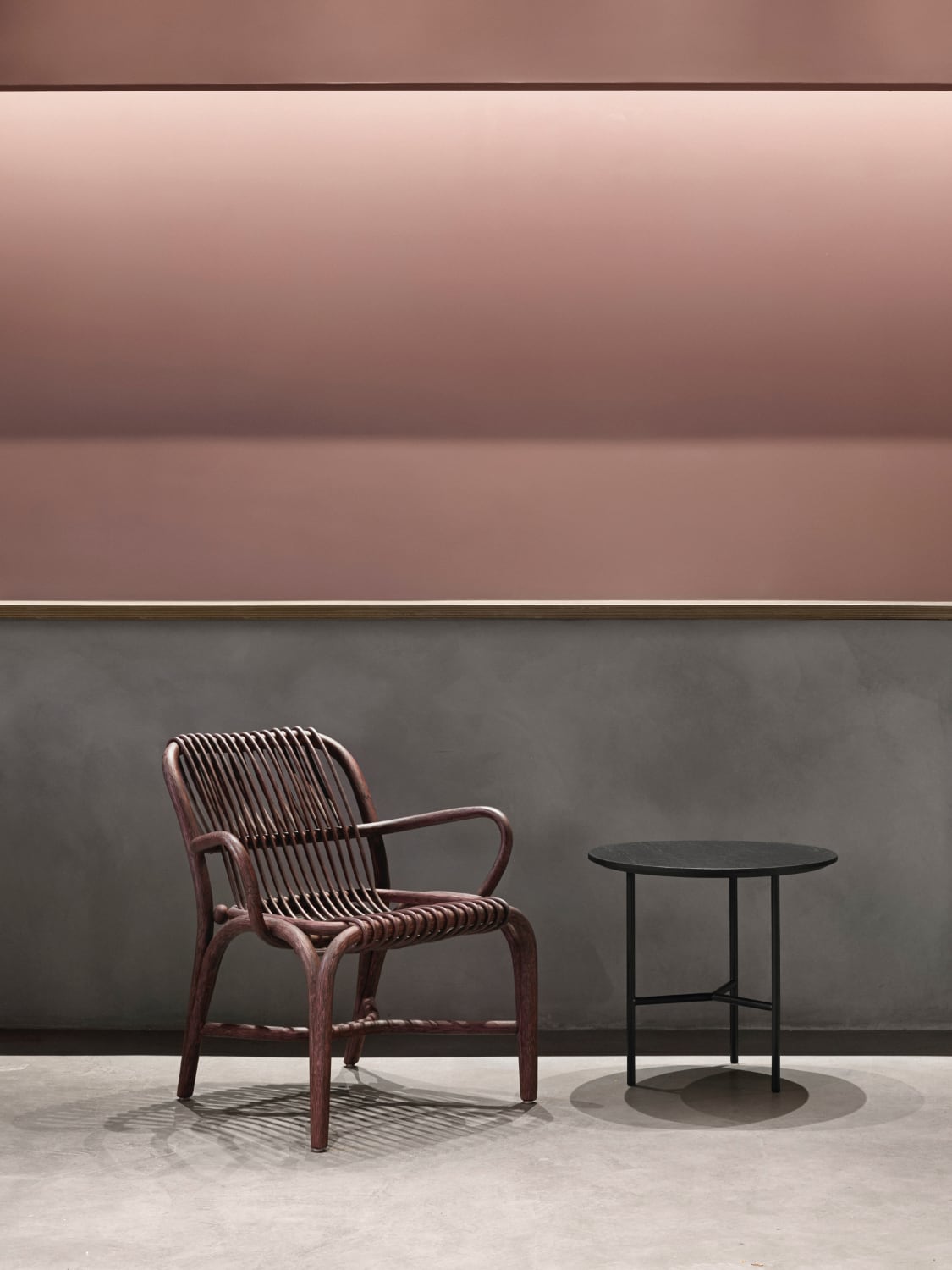
Fontal armchair by Oscar Tusquets Blanca. Photo © Expormim.
Over the past ten years, Expormim’s star has shone brightly. The company has collaborated with a varied roster of designers, including Jaime Hayon, Miguel Milá, and more recently NORM Architects (whose Cask lounge collection, a contemporary take on classic rattan furniture, is glorious in every way).
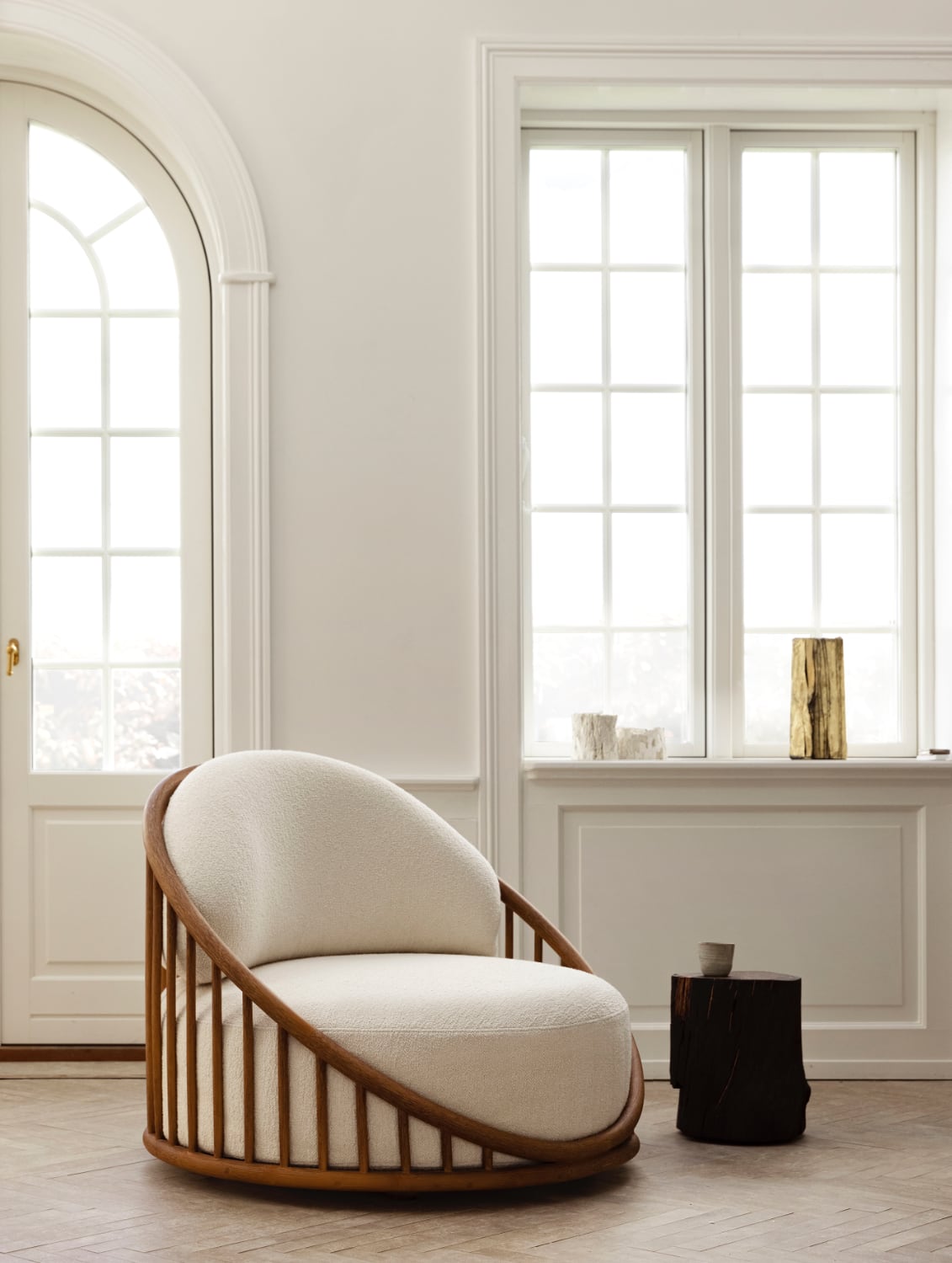
Cask armchair by NORM Architects. Photo © Expormim.
For this edition of ‘tradition and transition’, we talk with Mercedes Laso, CEO of Expormim and the granddaughter of Miguel Laso Tortosa.
What are Expormim’s values?
(ML) A fusion of craftsmanship and passion is the main hallmark of our furniture. Since its foundation in 1960, Expormim has never ceased to rely on artisans, the skilled craftspeople who pass their knowledge from generation to generation. Their expertise and know-how, acquired after years of dedication to their noble craft, has undoubtedly become Expormim’s greatest secret to the continual production of unique and exclusive pieces.
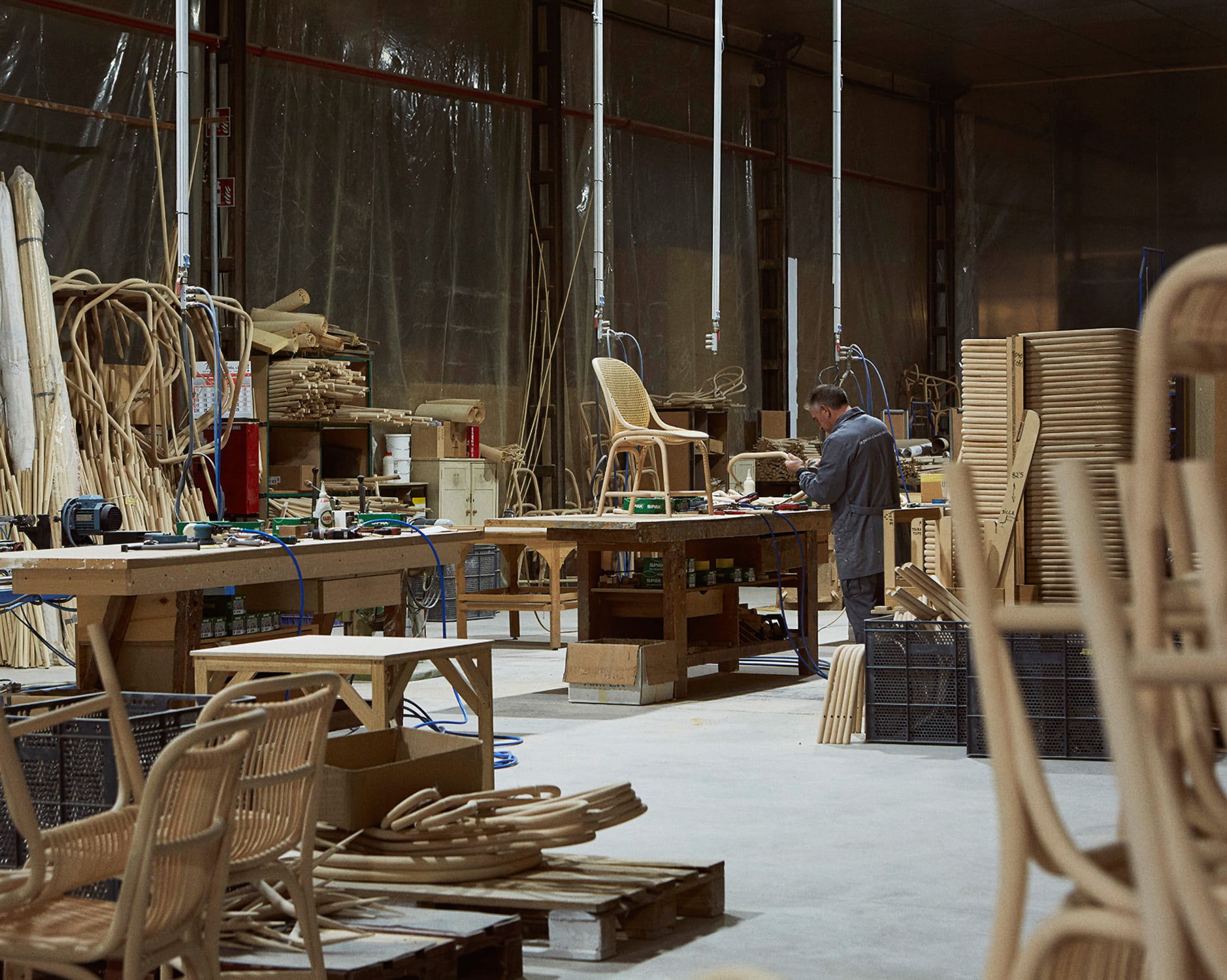
Photo © Mariluz Vidal.
What sets the company apart?
(ML) We are currently the only surviving industrial manufacturer of rattan furniture in Europe. The fact that we work with a natural material, doing so in a handcrafted way, increases the manufacturing time for each piece of furniture. Given that rattan furniture takes a long time to produce, the vast majority of European manufacturers either ceased production or relocated. Rattan has always been a part of Expormim’s DNA; the decision to bring it back, update it, and give it new value, was both a logical and natural step.
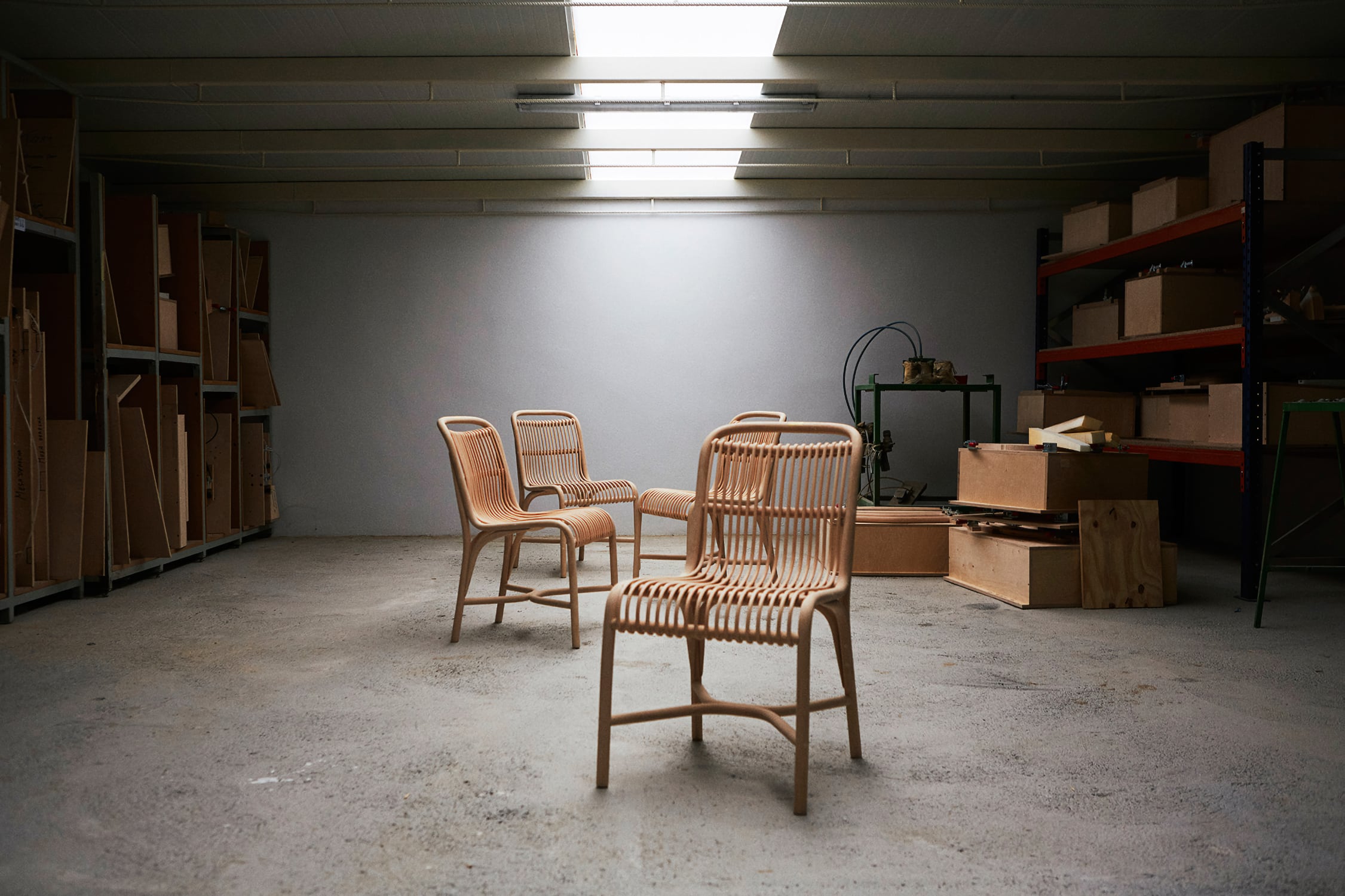
Gata dining chair by Miguel Milá and Gonzalo Milà. Photo © Mariluz Vidal.
Expormim works with an eclectic roster of designers, fresh and seasoned, from Spain and beyond. What do you look for in a design collaboration?
(ML) Working with external designers has meant we are continually learning from one another, developing knowledge and experience. It has also been an inexhaustible source of anecdotes, memories, and the building of a collaborative spirit that has contributed decisively to making Expormim the company it is today.
We believe in long-term collaborations. It is important that both parties share the same values, creating the necessary chemistry that enables a project to come to fruition. We are not motivated by having star designers: we are motivated by a collaboration that produces something good and lasting.
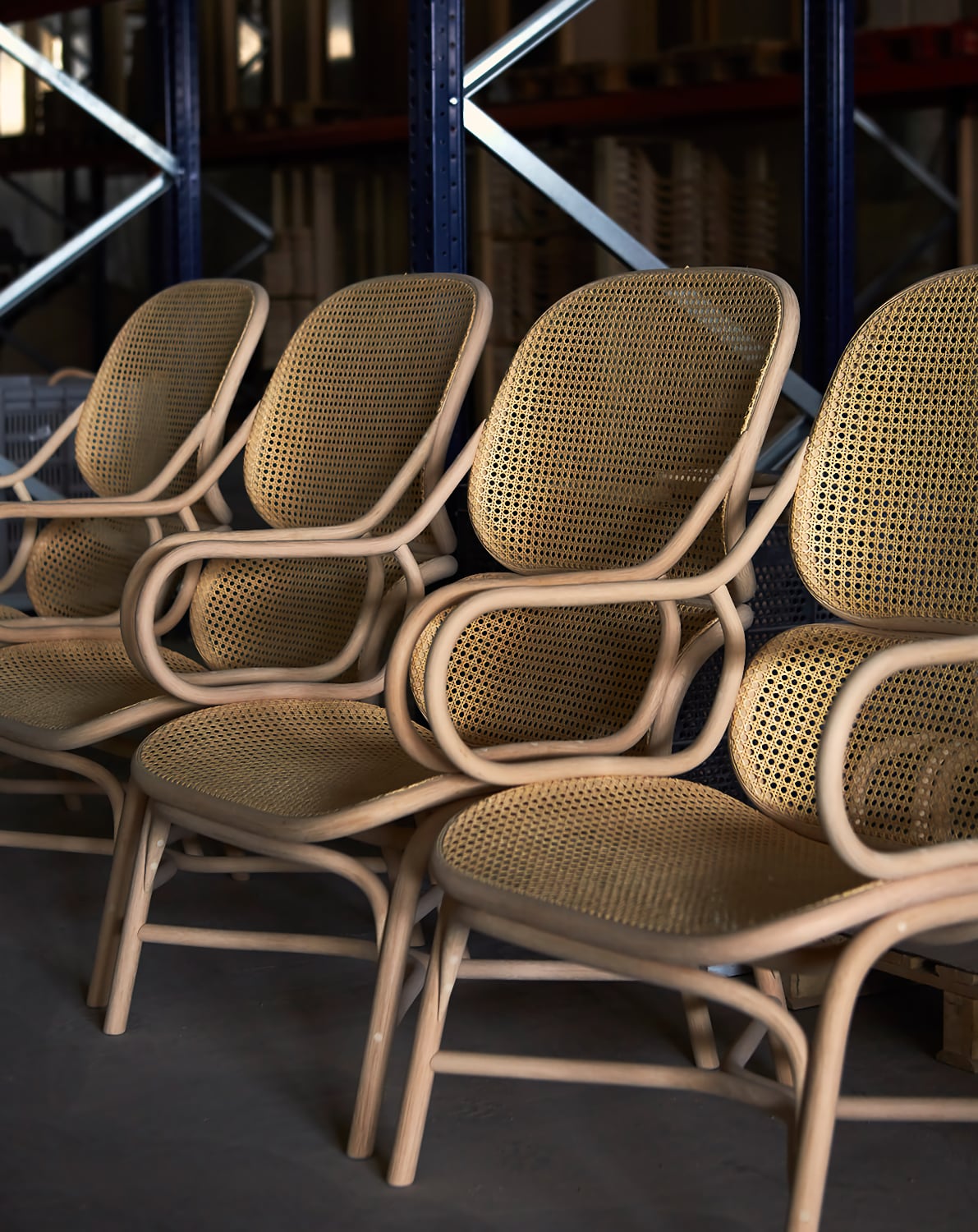
Frames armchair by Jaime Hayon. Photo © Mariluz Vidal.
Throughout this journey we have realised that design alone does not solve anything: design for design’s sake is superfluous and superficial, remaining only in appearance, in the epidermis. To go further, it is necessary to dig deeper into a design’s real utility, to think about its functionality, its capacity to have an impact on society, and, above all, the need to have a dialogue with industry to make the most of a design’s potential.
Expormim steadfastly champions craftsmanship and tradition. In a design world that grapples with continuous change and innovation, how does the company remain grounded?
(ML) Expormim has grown and evolved without renouncing its origins, thanks to a formula that is made up of fifty per cent passion and fifty per cent creativity. Over the years, this combination has helped us overcome challenge after challenge.
It is easier to create a company from scratch than to adapt an old one in order to address the new challenges and different scenarios of a global world. It was our choice to adapt and I believe we have succeeded by finding the perfect balance between resilience and versatility, as well as the right amount of tradition and innovation.
Environmental sustainability is a key factor that every company must consider. What is Expormim’s approach?
(ML) With their durability and timeless design, it is essential that our objects stand the test of time. The knowledge that in fifty years a piece of furniture will still be understandable, admired, and valued, is what makes it a classic in any field. It is also what gives it the possibility of becoming a legacy.
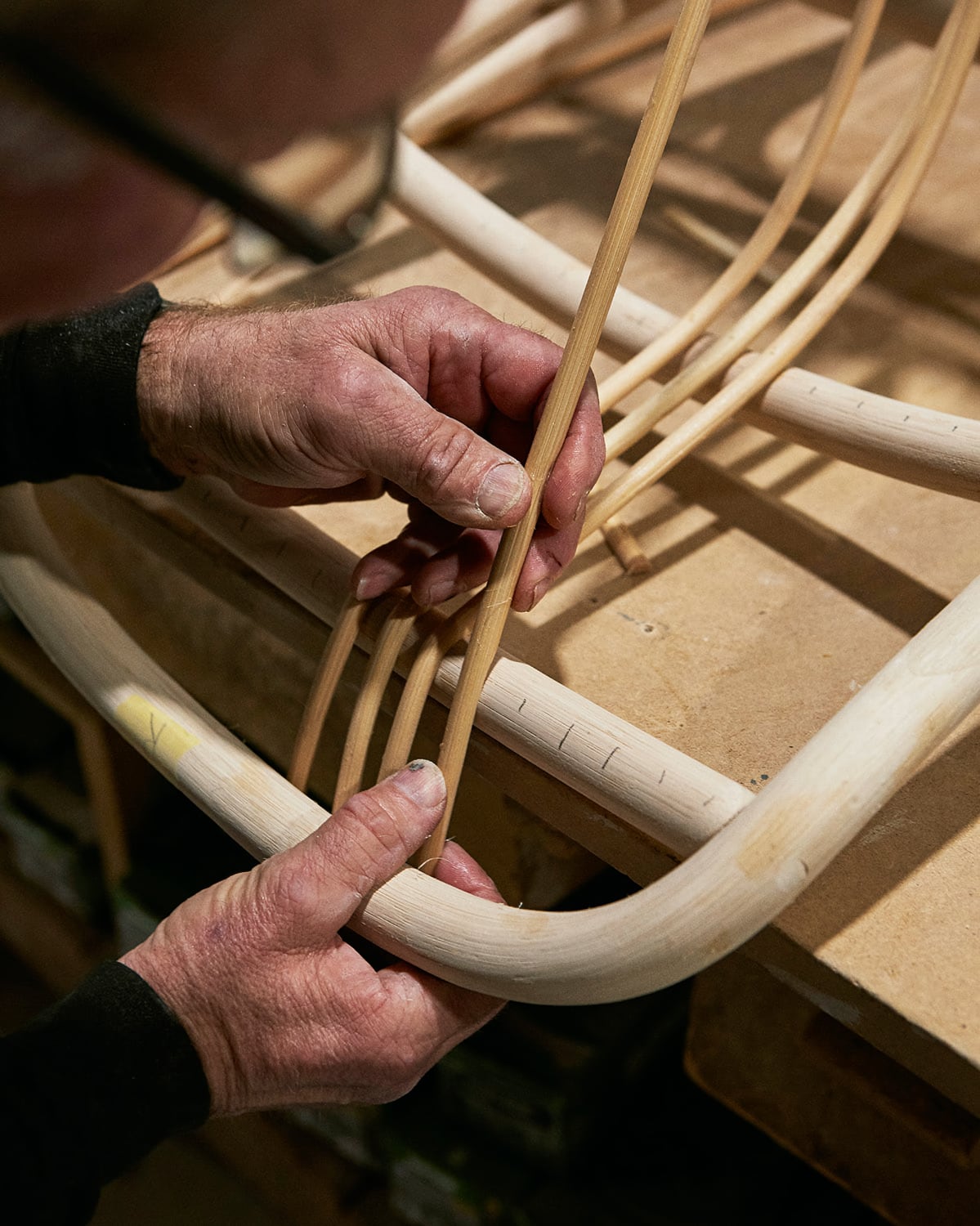
Photo © Mariluz Vidal.
Compared with other design nations—Denmark, Sweden, and Italy to name a few—Spain is perhaps less forthcoming about its design credentials. How would you describe Spanish design in the 21st century?
(ML) Perhaps this is because in Spain, until recently, there was little design culture and our companies were not aware of the transformative capacity that design has in society. However, in recent years a great deal of progress has been made. Today, most of our medium-sized and large companies have a design department, whereas only fifteen years ago this was not the case. Design is becoming more visible in society and an interesting breeding ground is being created.
We are at a decisive moment; it is up to designers, companies, and institutions to make the most of this opportunity by ensuring it generates a valuable industrial fabric. We must create professional jobs that give our companies a competitive edge globally. Moreover, the solution is not exclusive to the designer—it is necessary to integrate good design management within our companies.
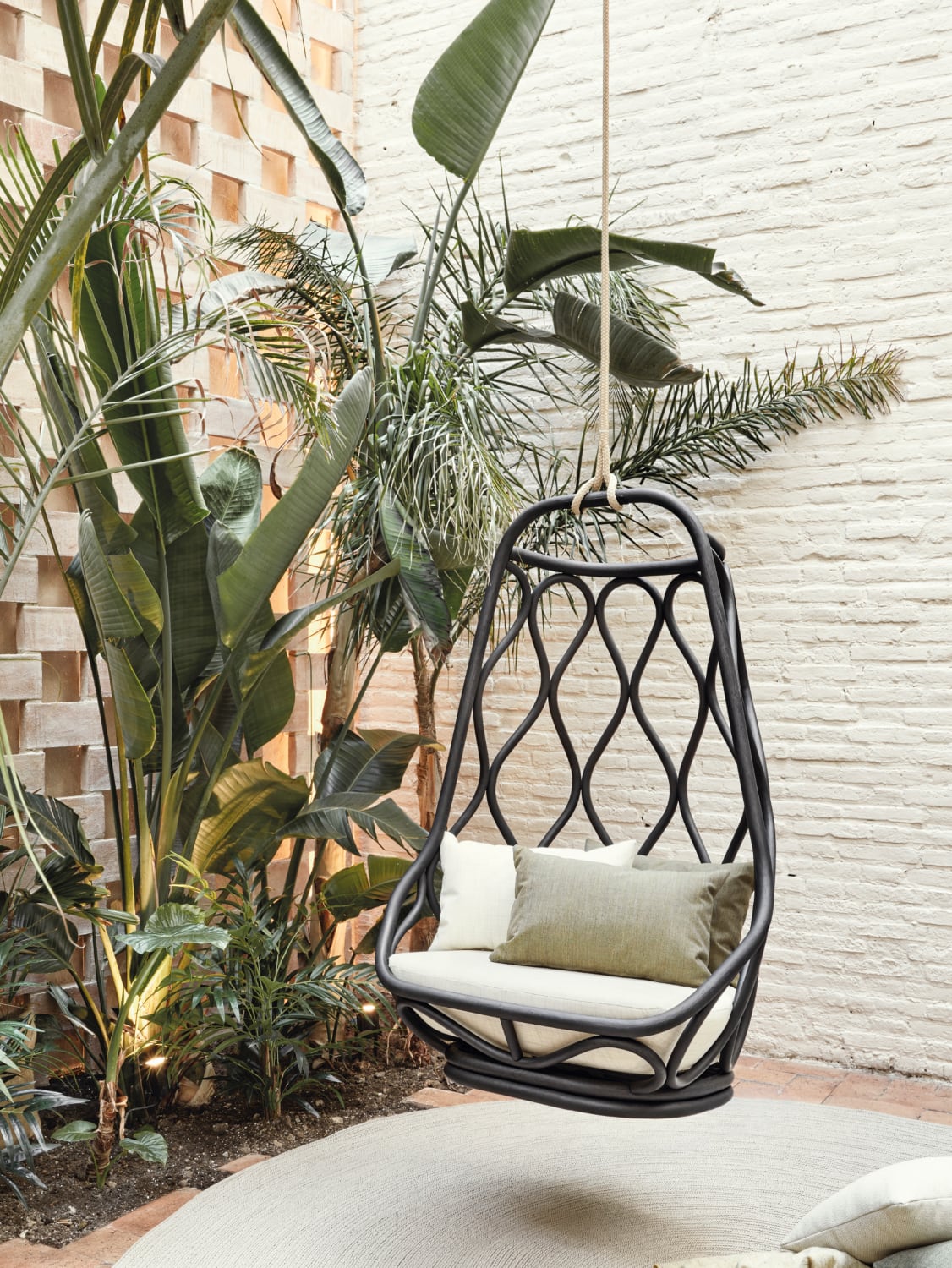
Nautica swing chair by MUT design studio. Photo © Expormim.
What advice would you give to a new company who wishes to embrace craft and tradition, but might worry about the future?
(ML) We are living in a decisive and transcendental moment in our history as a society. We need to redesign the future of our industry: concepts such as circular economy, social and environmental responsibility, preservation of arts and crafts, etc., make more sense than ever. We need to think about what legacy we want to leave to our children.
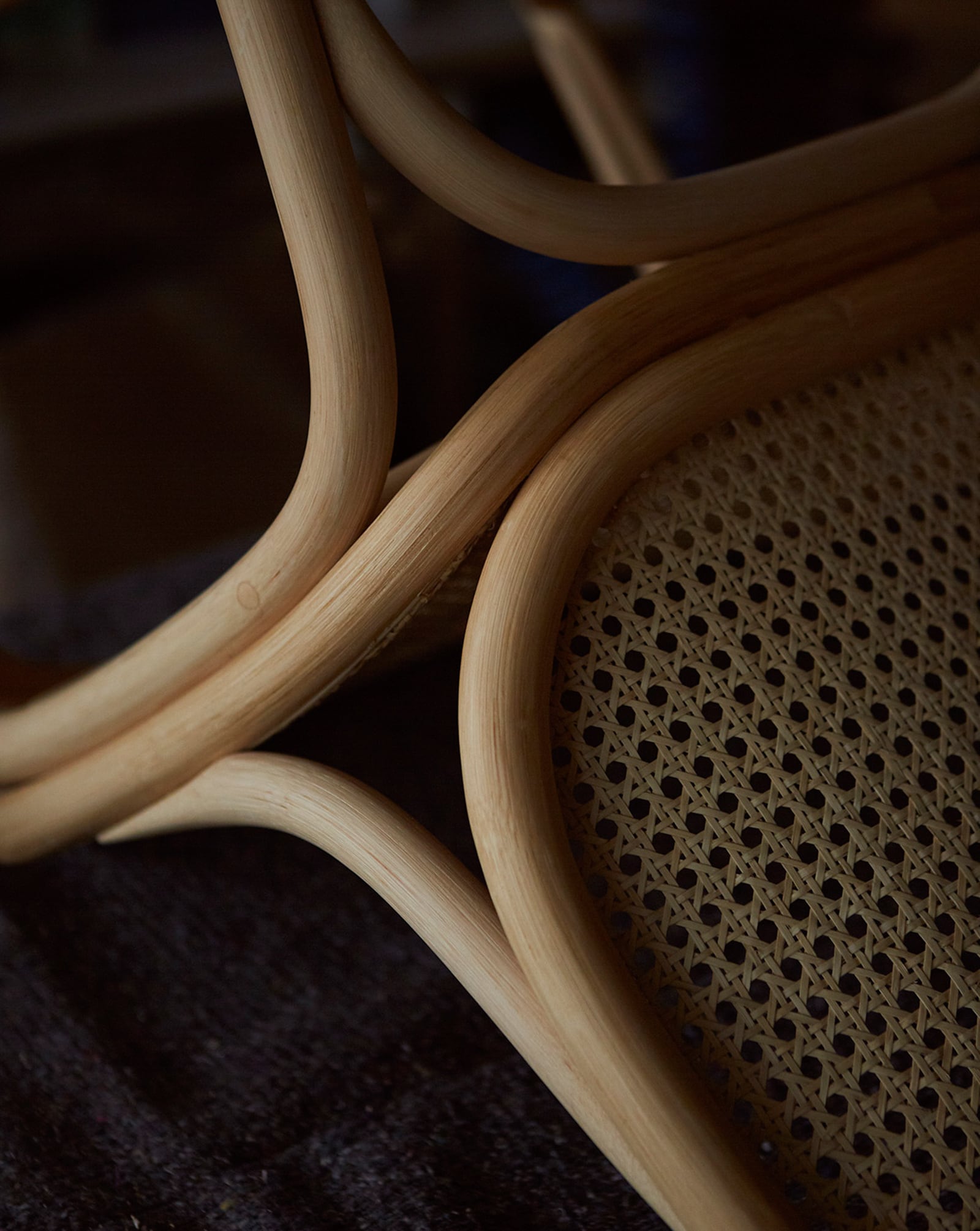
Photo © Mariluz Vidal.
About Tradition and Transition
Tradition and transition is a series of interviews with Spanish design companies very much admired here at LZF. In this series, we explore how traditional ways of working harmonise with transition, change, and innovation. Similar to LZF, we’re keen to learn more about those companies founded on the basis of tradition and their subsequent transition to modern, dynamic businesses.

